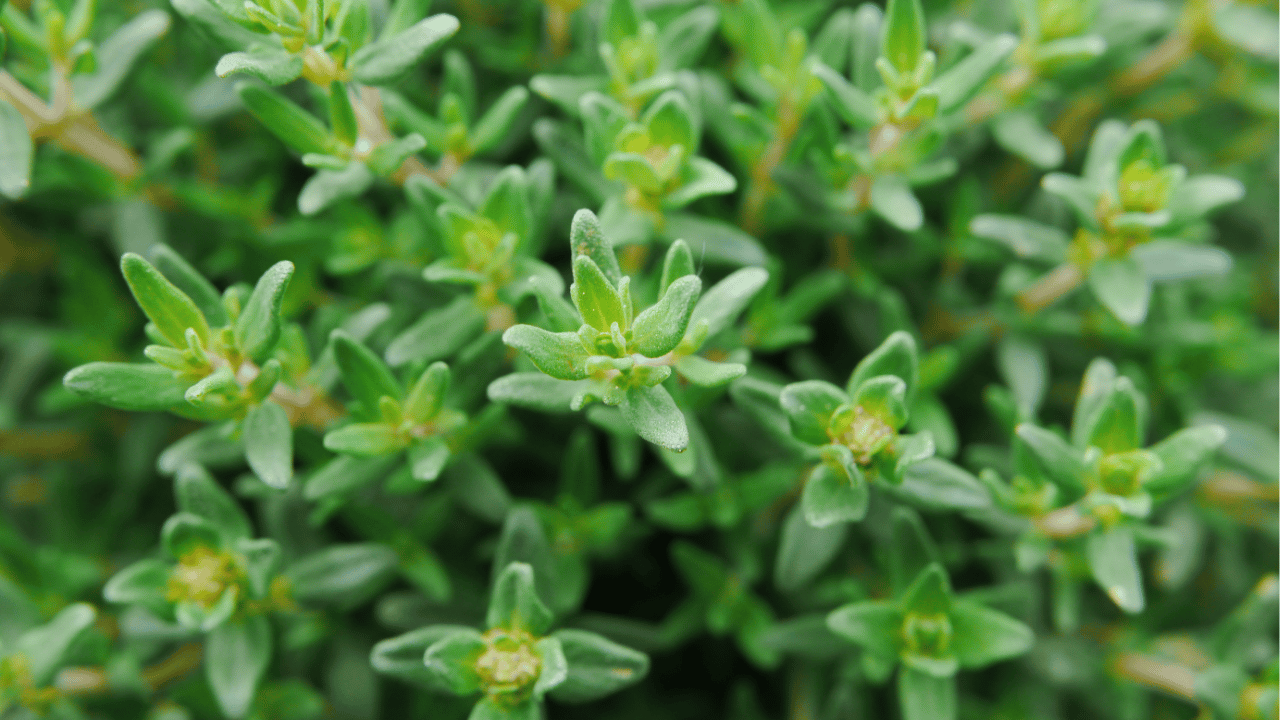Caring for thyme involves a delicate balance of attention and restraint, as this resilient herb thrives with minimal fuss. Its fragrant leaves and hardy nature make it a favorite for gardeners seeking an easy-to-maintain, evergreen plant. However, proper care ensures it flourishes year after year. Whether you’re growing thyme indoors or out, understanding its needs is key to harnessing its full potential in your garden.
1. Choose Well-Draining Soil
Thyme loves dry, well-draining soil, and planting it in waterlogged conditions can lead to root rot. The soil should be gritty, preferably sandy or loamy, to allow excess water to escape quickly. Amend your garden bed with sand or fine gravel to achieve the ideal texture.
In pots, opt for a cactus mix or blend your potting soil with sand to mimic its natural growing conditions. The key is to avoid heavy clay soil, as thyme’s roots need air and space to grow freely.
2. Plant in Full Sun
Thyme thrives in full sunlight, absorbing as much energy as possible to fuel its growth. Place it in a spot where it will receive at least six hours of direct sunlight daily. In shadier conditions, the plant will struggle to maintain its vigor and may grow leggy.
If growing indoors, position thyme near a south-facing window or use grow lights to supplement natural light. This herb thrives in bright, dry environments, so ensure it gets enough sun to prevent stunted growth.
3. Avoid Overwatering
While thyme is drought-tolerant, it suffers when exposed to too much water. Watering deeply but infrequently is the best approach. Wait until the top inch of soil is dry before watering again. This encourages the roots to spread out and seek moisture deeper in the soil.
For potted thyme, ensure pots have drainage holes to prevent water accumulation. Avoid letting the plant sit in water for extended periods, as this can cause the roots to rot and weaken the plant.
4. Prune Regularly for Bushier Growth
Pruning thyme is essential for maintaining its shape and encouraging fuller, bushier growth. Regularly trim back the top third of the plant during the growing season, removing any leggy or woody stems. This helps direct the plant’s energy towards producing more fragrant leaves.
After pruning, new shoots will emerge, making the plant denser. It’s also an excellent opportunity to harvest fresh thyme for cooking or drying while keeping your plant in top condition.
5. Fertilize Sparingly
Thyme doesn’t need heavy feeding, and too much fertilizer can dilute its flavor. Use a diluted, balanced fertilizer once a month during the growing season, but avoid over-fertilizing. Excess nitrogen promotes leaf growth at the expense of essential oils, reducing the intensity of thyme’s flavor.
Organic compost or a slow-release fertilizer will provide gentle nourishment. Always remember that thyme grows best in lean conditions, so less is often more when it comes to feeding.
6. Protect from Frost in Colder Climates
In colder climates, thyme may struggle through harsh winters. If your region experiences frost, cover the plants with mulch or a frost blanket to protect the roots from freezing. This insulation helps maintain soil warmth and moisture levels during the colder months.
For potted thyme, bring the plants indoors or place them in a sheltered location to avoid frost damage. Even though thyme is hardy, consistent freezing can cause permanent damage to the plant’s structure.
7. Provide Air Circulation to Prevent Mildew
Thyme benefits from good air circulation, which helps prevent powdery mildew and other fungal diseases. Avoid overcrowding the plants, spacing them at least 12-18 inches apart to allow air to flow freely between them. Stagnant air increases humidity around the plant, which thyme dislikes.
When grown indoors, ensure proper ventilation by positioning it in a well-aired room or near a fan. This simple step can help you avoid common fungal problems and keep your thyme healthy.
8. Harvest Gradually and Consistently
Harvesting thyme regularly encourages new growth and keeps the plant productive. Snip a few sprigs at a time rather than cutting back large portions, which can stress the plant. This gradual approach helps the plant regenerate quickly while providing a continuous supply of fresh thyme.
Always harvest in the morning, after the dew has dried but before the sun is too strong. This preserves the essential oils, ensuring the leaves are as fragrant and flavorful as possible.
9. Keep Weeds at Bay
Thyme dislikes competition from weeds, which can crowd its roots and steal essential nutrients. Regularly remove weeds around the base of your thyme plant, being careful not to disturb its shallow roots. Mulching with a thin layer of gravel or coarse sand can also help suppress weed growth while promoting drainage.
Hand weeding is the safest method to avoid damaging the delicate root system. If growing thyme in pots, check frequently for any signs of encroaching weeds and remove them immediately.
10. Watch for Pests
While thyme is generally pest-resistant, it can occasionally attract aphids, spider mites, or whiteflies. Regularly inspect your plants for signs of infestation, such as curled leaves or discolored spots. If you notice pests, wash them off with a strong stream of water or use insecticidal soap to manage the problem.
Encouraging beneficial insects, like ladybugs, can also help control pest populations naturally. Keeping your thyme healthy through proper care will reduce the likelihood of serious pest issues.

